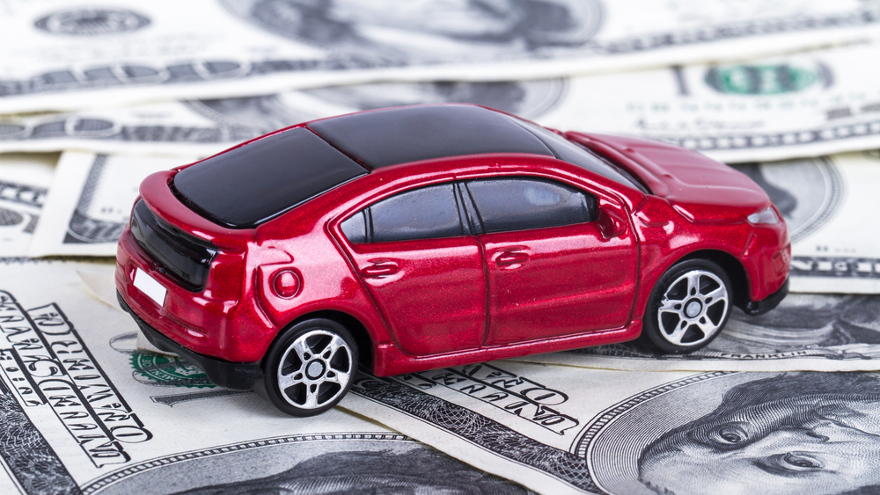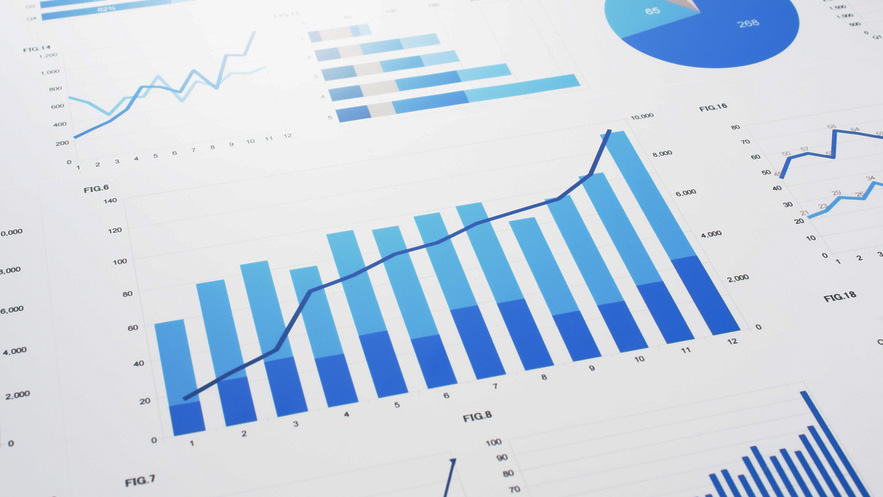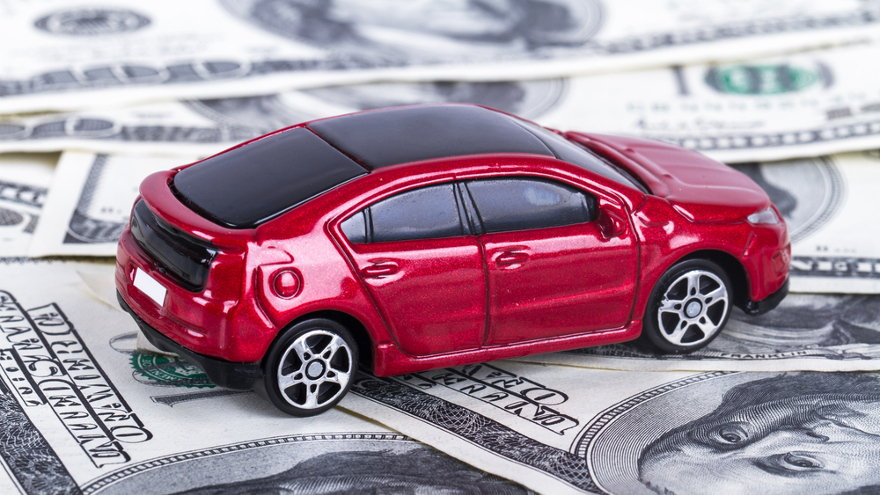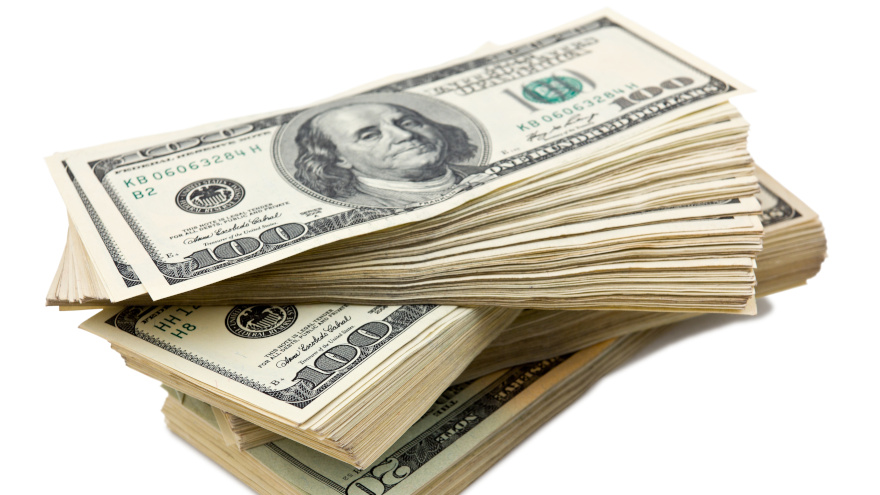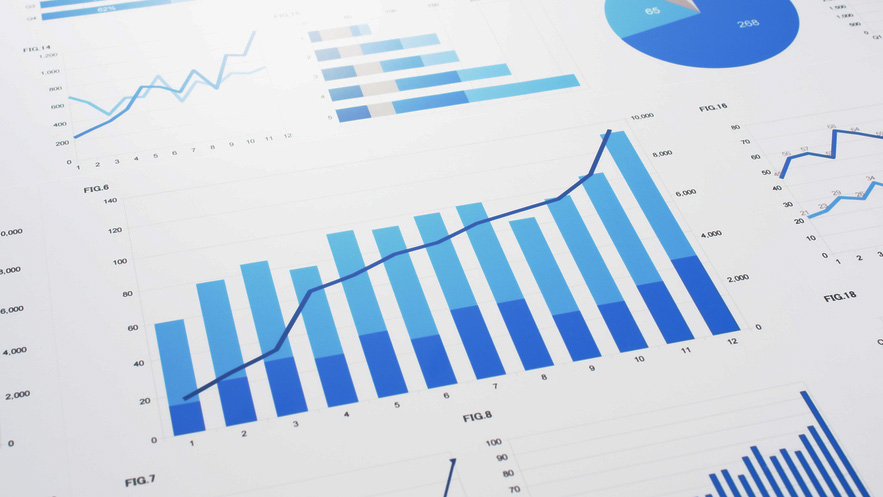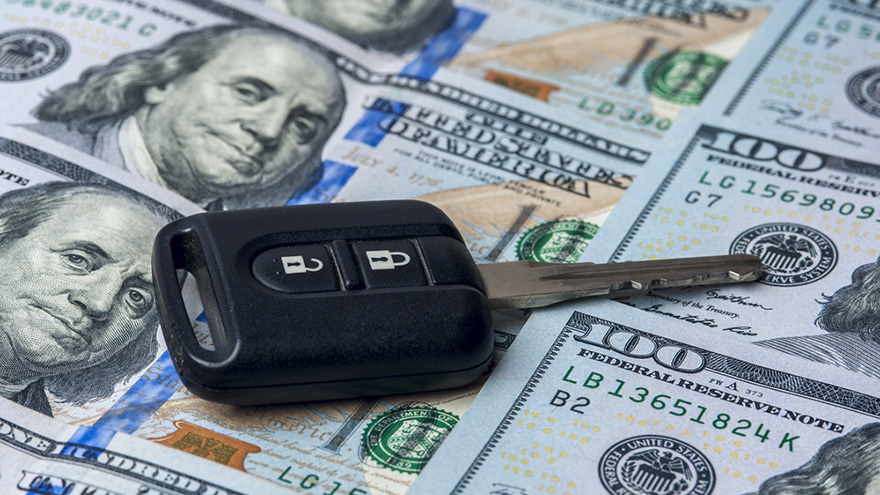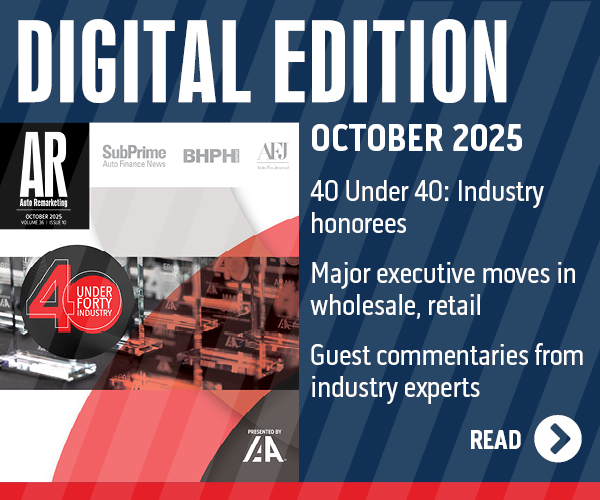Along with reviewing some of its 2019 metrics connected with the subprime auto asset-backed securities market, Fitch Ratings shared the five factors that analysts anticipate to have an impact throughout the securitization market this year.
Analysts described these five factors as a part of its latest report titled, Auto ABS Index: In the Auto ABS Driver’s Seat: 4Q19. The factors included:
• Risks of escalating trade war: The continued uncertainty surrounding the trade war with China could result in further negative pressure on economic growth.
• COVID-19 and political turmoil in U.S.: The extent and duration of the coronavirus outbreak and 2020 election could weigh on market volatility and confidence.
• Late-cycle behavior and “asset bubbles:” Ten years since the global financial crisis, elevated asset values driven by low rates and late-cycle behaviors could also pose additional credit risk.
• Risks Related to LIBOR replacement in 2021: 2020 will be an important year for LIBOR developments, especially for legacy contracts. Failure to address transition risks for legacy contracts will increase the likelihood of risks materializing beyond 2021.
• Secular pressures on market fundamentals: Shifting consumer behavior and innovation from fintech and companies are negatively impacting Commercial mortgage-backed securities (CMBS) and may start to affect others, such as auto ABS.
Specific to subprime, Fitch Ratings pointed out that losses remained stable in 2019.
Analysts indicated annualized net losses increased to 9.39% at the close of 2019 from 6.56% at the year’s midpoint. Those losses are down as compared to 9.66% at end of 2018 but higher versus 8.99% spotted when 2017 concluded.
Fitch Ratings also noted that annualized net losses — on a 12-month rolling basis — remained unchanged year-over-year at 8.63% when 2019 finished.
“Overall, annualized net losses have been relatively consistent over the last two years,” Fitch Ratings analysts said in the report.
Fitch Ratings tabulated that subprime issuance totaled $31.0 billion for the year with $14.1 billion being securitized during the second half of 2019. The annual total was a bit lower than 2018 when subprime auto finance companies issued $32.2 billion with $16.5 billion coming in the last six months of that year.
“Cumulative net losses for 2017 subprime vintage ABS transactions are trending in line with the 2016 vintage, which has the highest cumulative net losses as compared to other vintages at the same points of seasoning,” Fitch Ratings said.
“Cumulative net losses for 2018 vintage ABS subprime transactions are showing improved performance over prior recent vintages,” analysts continued while adding, “2018 vintage performance is comparable to 2014 vintage at the same points of seasoning. 2019 performance is too early to report.”
S&P Global Ratings indicated the U.S. auto loan asset-backed securities (ABS) market remained “healthy” last year and started 2020 on “solid ground.”
But a separate report from Kroll Bond Rating Agency (KBRA) showed auto loan ABS credit performance softened in January, as net losses and delinquencies rose in both KBRA’s Prime and Non-Prime Auto Loan Indices.
Let’s begin with S&P Global Ratings’ overall assessment as analysts determined new issuance increased to $82.9 billion in 2019 from $81.8 billion in 2018, despite a nearly 2% decline in U.S. light vehicles sales.
“Prime and subprime auto loan ABS collateral performance remained sound, as reflected by lower static pool cumulative net losses on the prime 2017 and 2018 vintages relative to 2016 and stable to slightly lower cumulative net losses on the more recent subprime cohorts,” S&P Global Ratings said in a news release.
In addition, analysts noted there were a record 432 classes upgraded and only five downgrades.
S&P Global Ratings offered four more points after looking at its annual data, including:
• With 13 months of performance, 2018’s prime cumulative net losses averaged 0.36% compared with 0.39% for the 2017 vintage. Subprime’s cumulative net losses for the 2018 vintage were 5.19% compared with 5.61%-5.76% for the 2015-2017 vintages.
• Average monthly statistics for 2019 also reflected “solid” performance, according to analysts. The average monthly prime loss rate was stable at 0.56%, while the subprime loss rate declined slightly to 8.17% from 8.31%.
• Prime and subprime recoveries increased to 58.27% from 57.88%, and 42.82% from 41.33%, respectively.
• Prime 60-day delinquencies remained flat at 0.41%, whereas subprime delinquencies rose only marginally to 5.08% from 5.04%.
KBRA then took a look at its January data and found some auto ABS market softening.
Analysts determined annualized net losses in KBRA’s Prime Auto Loan Index climbed 3 basis points on both a month-over-month and year-over-year basis to 0.76%, while the percentage of prime borrowers who were 60 days past due rose 5 basis points month-over-month but fell 1 basis point year-over-year to 0.50%.
Meanwhile, analysts found KBRA’s Non-Prime Auto Loan Index posted more mixed results in January, with annualized net losses climbing 55 basis points month-over-month but falling 75 basis points year-over-year to 9.50%. KBRA reported non-prime 60-day delinquencies came in at 5.72% in January, up 43 basis points versus the previous month and 5 basis points compared to a year earlier.
“The year-over-year improvement in net loss rates was almost entirely driven by improved performance within Santander’s two non-prime ABS shelves (DRIVE & SDART),” KBRA said in its latest report.
“We expect delinquency and loss rates in both indices to remain elevated for one more month, before beginning a downward trend as borrowers begin to receive tax refunds, which provide an additional source of cash flow to help them pay their auto loans,” KBRA continued.
KBRA also mentioned its analysis of Reg ABS II asset-level disclosures also showed that securitized auto loan credit performance softened in January.
The percentage of prime borrowers who went from 60 days delinquent to current decreased 210 basis points month-over-month and 264 basis points year-over-year to 18.3%, while the percentage of borrowers going from 60 days delinquent to charged-off declined 30 basis points month-over-month but rose 64 basis points year-over-year to 15.3%.
Meanwhile, KBRA pointed out the percentage of non-prime borrowers who cured their delinquencies fell to 11.6%, down 93 basis points month-over-month and 184 basis points year-over-year. Analysts added the non-prime delinquency to charge-off roll rate came in at 22.9% in January, down 63 basis points versus December and 80 basis points versus January of last year.
S&P Global Ratings spotted what it called “normal seasonal weakness” after analysts reviewed its latest data on collateral performance in the U.S. auto loan asset-backed securities (ABS) sector.
Analysts found that “weakness” appeared in November with recoveries declining and delinquencies increasing relative to October’s levels.
S&P Global Ratings also determined that year-over-year, prime performance softened with delinquencies and losses increasing, while subprime improved with by higher recoveries and lower losses.
According to the report shared with SubPrime Auto Finance News, U.S. prime auto loan losses remained stable at 0.67% in November compared to 0.68% in October, but they increased from 0.58% in November of last year.
Analysts explained that year-over-year rise of 10 basis points stemmed from a drop in recoveries to 53.52% from 56.56% recorded a year earlier.
Meanwhile, S&P Global Ratings noted that subprime losses decreased 47 basis points to 8.85% in November from 9.32% in October. The year-over-year drop came in at 48 basis points from November 2018 to land at 9.33%.
After netting out three deep subprime issuers, S&P Global Ratings mentioned that its modified subprime losses decreased by 83 basis points to 6.68% in November from 7.51% in October. The year-over-year improvement registered in at 40 basis points since the November 2018 reading was 7.08%.
Also of note in the subprime space, analysts noticed that subprime recoveries in November dropped to their lowest point since January, softening by 88 basis points to 38.71%
S&P Global Ratings went on to mention that the prime 60-day delinquency rate increased slightly to 0.45% in November from 0.43% in October 2019, and 0.42% in November 2018.
The firm added the subprime 60-day delinquency rate rose to 5.43% in November from 5.32% in October, but was generally stable compared to the reading of 5.46% registered in November 2018.
S&P Global Ratings’ complete report can be obtained here.
Kroll Bond Rating Agency (KBRA) noticed “signs of improvement” within the auto loan ABS market in December.
According to its latest report shared with SubPrime Auto Finance News, analysts indicated annualized net losses in KBRA’s Prime Auto Loan Index remained flat on both a month-over-month and year-over-year basis, coming in at 0.74%. KBRA reported the percentage of prime contract holders who were 60 days or past due rose 1 basis point month-over-month in December by edged 4 basis points lower year-over-year to settle at 0.45%.
Meanwhile. KBRA’s Non-Prime Auto Loan Index posted what analysts called “solid results” in December.
KBRA determined non-prime annualized net losses declined 50 basis points month-over-month and 59 basis points year-over-year to come in at 8.95%. Analysts found that non-prime 60-day delinquencies registered in at 5.30% in December, representing a decrease of 6 basis points versus the previous month and 11 basis points compared to a year ago.
“We expect delinquency and loss rates in KBRA’s Prime and Non-Prime Indices to remain elevated over the next couple of months, before beginning a downward trend in March (February collection period), as borrowers begin to receive tax refunds, providing an additional source of cash flow to help them pay their auto loans,” analysts said in the latest report.
KBRA acknowledged its examination of loan level data showed mixed performance in December.
Analysts uncovered that the percentage of prime contract holders who went from 60 days or more delinquent to current sunk 70 basis points on both a month-over-month and year-over-year basis to 20.4%. KBRA also found the percentage of those prime contracts going from 60 days or more delinquent to charged-off fell 80 basis points month-over-month and 230 basis points year-over-year to 15.6%.
Finally, KBRA pointed out the percentage of non-prime contract holders who cured their delinquencies in December fell to 12.5%, down 100 basis points month-over-month and 230 basis points year-over-year.
Analysts added the non-prime delinquency to charge-off roll rate came in at 23.6% in December, down 30 basis points versus November but 170 basis points higher compared to December 2018.
The Kroll Bond Rating Agency (KBRA) released its 2020 forecast for the automotive asset-backed securities, mentioning how a new participant might generate more activity in this arena.
Analysts said in their report shared with SubPrime Auto Finance News this week that they expect auto-related ABS volumes to remain mostly flat next year, coming in at $125 billion.
KBRA explained its forecast is based on the thinking that U.S. new vehicle sales peaked in 2017 and will likely continue to gradually decline in 2020, which should weigh on prime auto loan, auto lease, and dealer floorplan ABS volumes.
“Offsetting the modest decline in auto sales is the rise in the percentage of auto loans being funded through the securitization,” analysts said. “In 2017, around 9% of outstanding auto loans were funded through the ABS market, but this percentage has risen to over 10% in 2019.”
Another development that impacted KBRA’s ABS expectations for 2020 arrived in November. That’s when the firm said GTE Federal Credit Union priced the first auto loan securitizations ever issued by a credit union.
“Although the deal was just $175 million, if other credit unions begin to tap the ABS market for funding rather than rely on their deposit base, this could be a source of growth in the asset class,” analysts said.
KBRA pointed out that year-over-year growth in auto-related ABS supply has been fueled by a substantial amount of auto lease deals coming to market. That segment constituted $20.9 billion through November, representing a lift of 39% year-over-year.
In contrast, analysts reiterated auto loan volumes appear to be finally leveling off as new vehicle sales have plateaued. Overall auto loan supply is up just 4.1% year-over-year, with prime auto loan volumes up 13.4% and non-prime volumes down 9.4%.
KBRA added that other auto-related ABS sectors — rental car, fleet lease and dealer floorplan ABS — watched their volumes grow to $19.4 billion, which marked a 4.4% rise year-over-year.
While keeping a close watch on lengthening contract terms, S&P Global Ratings reported that collateral performance was generally positive for the U.S. auto loan asset-backed securities (ABS) sector in September.
“Losses and 60-plus-day delinquencies decreased month over month as well as year over year in both the prime and subprime segments, although recoveries in both segments declined compared to the prior month,” the S&P Global Ratings analyst team led by Amy Martin said in the report shared with SubPrime Auto Finance News.
“Lower recoveries are typical as we approach year-end and next year’s model vehicles start crowding the showrooms,” analysts added.
S&P Global Ratings determined U.S. prime credit losses improved to 0.53% in September from 0.58% in August and 0.61% in September of last year.
Analysts also found subprime losses decreased 35 basis points to 8.40% in September compared to August and 17 basis points versus September of last year.
S&P Global Ratings reported the prime 60-plus-day delinquency rate decreased slightly to 0.40% in September compared to 0.42% in both August and last September.
Meanwhile, analysts found the subprime 60-plus-day delinquency rate declined to 5.22% in September from 5.25% in August and 5.36% in September of 2018.
Perhaps most notable, S&P Global Ratings discovered prime recoveries declined considerably, tumbling by 588 basis points to 53.11% in September from 58.99% in August, although they improved from 52.01% in September of last year.
Analysts spotted softening in subprime recoveries, too, noticing a decrease to 40.70% in September from 42.95% in August. But like in prime, subprime recoveries improved year-over-year from 39.42%.
“Recoveries typically decline over the course of the second half of the year, bottoming out around the end of the year or the beginning of the next. September's decline was further magnified by the cool-off in used vehicle prices after an unusually strong summer,” analysts said in the report.
Turning its attention to the contracts making up those securitizations, S&P Global Ratings reported that for the nine months that ended September, average terms increased to 66.13 months compared to 65.73 months for the same period in 2018. Analysts also mentioned the percentage of contracts with an original term greater than 60 months (60.31%) surpassed the level in 2018 (57.78%).
In addition to lengthening terms, S&P Global Ratings pointed out the weighted average annual percentage rate (WAAPR) has increased along with the percentage of used vehicles. Mitigating this, however, are a high weighted average FICO of 755 and lower weighted average loan-to-value. (95.48% compared to 95.94% a year earlier).
“We have started to track the share of loan terms with maturities greater than 72 months, which year to date through September was 7.80% (6.50% in 73-78 months plus 1.26% in 79-84 months),” analysts said in the report.
“While the popularity of larger and more expensive vehicles has endured among consumers as gas prices remain low, the affordability issues thereby created continue to be addressed by lengthening loan terms,” they added.
S&P Global Ratings also emphasized that lengthening terms are happening in subprime, too.
Analysts determined the percentage of subprime contracts with an original term greater than 60 months has fluctuated between approximately 83% and 85% for each one-year period from 2015 through 2018. S&P Global Ratings indicated the percentage for the nine months that ended in September is roughly in the middle of that range at approximately 83.5%, albeit that represents an increase from 81.3% for the same period in 2018 and 83.0% for the full-year 2018.
In addition, analysts said the percentage of contracts with terms greater than 72 months has increased noticeably to 7.38% for the nine months that ended in September from 3.80% for the same period in 2018.
“In recent years, the WAAPR has steadily increased, as has the percentage of used vehicles, which has been somewhat in flux since the Great Recession. The weighted average FICO and LTVs have also experienced fluctuations over the years but have most recently worsened,” S&P Global Ratings said.
S&P Global Ratings went into more details about specific finance companies as well as cumulative net losses in both prime and subprime in its latest report that can be acquired here.
After revealing a change in its latest quarterly report about how dealer fees are collected, Credit Acceptance Corp. also recently shared the details about its completion of a $351.7 million asset-backed non-recourse secured financing.
Pursuant to this transaction, Credit Acceptance said it contributed contracts having a value of approximately $439.6 million to a wholly-owned special purpose entity, which will transfer the contracts to a trust. That trust will issue three classes of notes, including:
| Note Class |
Amount |
Average Life |
Price |
Interest Rate |
| A |
$237,500,000 |
2.61 years |
99.98459% |
2.38% |
| B |
$67,900,000 |
3.51 years |
99.98063% |
2.86% |
| C |
$46,300,000 |
3.81 years |
99.97727% |
3.06% |
Credit Acceptance explained the Financing will accomplish three objectives, including:
— Have an expected annualized cost of approximately 2.9% including the initial purchaser’s fees and other costs
— Revolve for 24 months after which it will amortize based upon the cash flows on the contributed contracts
— Be used by the company to repay outstanding indebtedness
Credit Acceptance said it will receive 6.0% of the cash flows related to the underlying consumer contracts to cover servicing expenses. The company added the remaining 94.0%, less amounts due to dealers for payments of dealer holdback, will be used to pay principal and interest on the notes as well as the ongoing costs of the Financing.
“The financing is structured so as not to affect our contractual relationships with our dealers and to preserve the dealers’ rights to future payments of dealer holdback,” company officials said in a news release.
Credit Acceptance pointed out the notes have not been and will not be registered under the Securities Act of 1933 and may not be offered or sold in the United States absent registration or an applicable exemption from registration requirements.
Meanwhile, Credit Acceptance also addressed the topic of its dealer network when it reported its third-quarter financial statement. The company explained that beginning on Aug. 5, dealers were able to enroll in its portfolio program without incurring an enrollment fee.
Prior to August 5, Credit Acceptance noted that dealers enrolled in its portfolio program either by paying an up-front, one-time fee of $9,850, or agreeing to allow the finance company to retain 50% of their accelerated dealer holdback payment(s) on the first 100 consumer retail installment contract assignments.
Credit Acceptance also mentioned that access to its purchase program is typically only granted to dealers that meet one of the following:
— Assigned at least 100 consumer contracts under the portfolio program
— Franchised dealership
— Independent dealership that meets certain criteria upon enrollment
Credit Acceptance reported that it closed the third quarter with 9,555 active dealers, representing a 10% lift year-over-year. The company classifies active dealers as operations that have received funding for at least one contract during the quarter.
As a result of its change, Credit Acceptance responded to questions from investment analysts about how not only the strategy change would impact its financial statement, but also whether the company could continue to generate double-digit growth in its dealer network.
“So we eliminated the fee, obviously, to get rid of an obstacle to growing the dealer program. But it’s hard to say how that will play out in the enrollment metrics going forward,” Credit Acceptance chief executive officer Brett Roberts said during the company’s latest quarterly conference call.
The seasonal impact Kroll Bond Rating Agency (KBRA) expected to see when analysts assembled their latest prime and non-prime indices of the automotive asset-backed securities (ABS) market arrived in October.
KBRA reported auto loan ABS credit performance weakened again in October with net loss and delinquency rates climbing in KBRA’s prime and non-prime indices.
“The month-over-month increase was expected as seasonal factors will likely continue to cause credit performance to deteriorate for the remainder of the year,” analysts said in the latest report shared with SubPrime Auto Finance News.
“On a year-over-year basis, both indices continued to show signs of improvement,” they continued.
The firm reported annualized net losses and 60-day delinquencies each rose 2 basis points month-over-month to 0.68% and 0.46%, respectively, with KBRA’s Prime Auto Loan Index.
On a year-over-year basis, analysts pointed out prime performance continued to improve, with net losses and delinquencies falling 9 basis points and 4 basis points, marking the 21st consecutive reporting period in which net losses and delinquency rates have fallen year-over-year.
KBRA shared that its Non-Prime Auto Loan Index exhibited a similar pattern, with annualized net losses and 60-day delinquencies rising 7 basis points and 20 basis points month-over-month to 8.95% and 5.33%, respectively.
However, on a year-over-year basis, analysts highlighted net losses in non-prime dropped 41 basis points, while the percentage of borrowers that were 60 days or more overdue held steady.
Looking deeper at its latest information, KBRA acknowledged an analysis of loan-level data also showed weaker credit performance in October.
The percentage of prime and non-prime borrowers who went from 60 days or more delinquent to current fell month-over-month, coming in at 20.6% and 13.5%, respectively, versus 21.2% and 15.0% in September.
Meanwhile, KBRA reported the percentage of prime and non-prime contract holders who were 60 days or more delinquent to start October — and were subsequently charged-off by the end of the month — fell to 14.4% for prime borrowers but rose to 24.8% for non-prime borrowers. Those movements represented a drop of 140 basis points month-over-month in the prime space, but a jump of 50 basis points in the non-prime segment.
September’s auto loan asset backed security data didn’t surprise analysts at Kroll Bond Rating Agency (KBRA). The latest readings for KBRA’s prime and non-prime indices arrived with seasonal patterns evident.
Analysts found that auto loan ABS credit performance weakened slightly in September, with net losses and delinquencies rising month-over-month in both prime and non-prime.
“The month-over-month increase was to be expected as seasonal factors will likely continue to push losses higher for the remainder of the year,” analysts said in the latest report. “On a year-over year-basis, both indices saw improvements.
Net losses and delinquencies each rose in September within KBRA’s Prime Auto Loan Index. Annualized net losses increased 7 basis points month-over-month to 0.66%, while the percentage of borrowers 60-days past due increased 2 basis points to 0.43%.
However, both performance metrics improved on a year-over-year basis, each falling 4 basis points compared to September of last year.
KBRA pointed out September marked the 20th consecutive reporting period in which net losses and delinquency rates have fallen year-over-year within the index.
Meanwhile, collateral performance in KBRA’s Non-Prime Auto Loan Index demonstrated some signs of improvement.
Although annualized net losses climbed 59 basis points month-over-month to 8.87%, analysts determined that losses dropped 39 basis points versus a year ago.
KBRA indicated the percentage of borrowers that were 60-days delinquent remained steady month-over-month at 5.14%, but ticked up 16 basis points compared to last September.
“The vast majority of issuers included in the index saw their performance deteriorate versus the previous month, which is likely being driven by seasonal factors, as borrowers spent on summer travel and begin to gear up for the holiday season,” analysts said.
KBRA closed its latest update by sharing an analysis of loan level data, which revealed mixed results in September.
The percentage of prime and non-prime borrowers who went from 60 days or more delinquent to current was fairly steady month-over-month, coming in at 21.2% and 15%, respectively, versus 21.5% and 14.7% during the previous month.
However, the percentage of prime and non-prime borrowers who were 60 days or more delinquent to start the month — and were subsequently charged-off by the end of the month — jumped to 15.9% and 24.3%, respectively. The readings represented a month-over-month increase of 67 basis points in the prime space and 112 basis points in the non-prime segment.
S&P Global Ratings senior director Amy Martin recently assembled a report with a title that concisely summarized the current state of auto financing.
Martin’s analysis titled, “Speed Bump Ahead: As Auto Loans Accelerate Toward 84 Months, Caution Is Warranted,” reviewed data from Experian as well as a sample of six providers — a mix of captives and commercial banks — to arrive at a conclusion that might come as a relief to risk managers and other company executives.
Martin began with a noticeable, growing trend. The rising popularity of larger, more expensive vehicles and new vehicle technology has driven growth in the average transaction price and amount financed of new vehicles. She explained higher financed amounts coupled with increased borrowing costs are fueling upward pressure on monthly payments, creating an affordability issue for consumers.
As a result, auto finance companies have been addressing this concern by lengthening contract terms, which serve to lower monthly payments. Experian’s second-quarter information showed terms lasting 61 to 72 months remain the most common (40% of new and 44% of used-vehicle contracts). However, Experian also determined contracts with an original term of 73 to 84 months have grown to approximately 31% and 19% of all new and used vehicle contracts, respectively.
S&P Global Ratings also discovered this year marked the first time a U.S. captive finance company securitized 84-month loans in a public U.S. ABS term transaction.
“These longer-term loans pose additional risk to investors and can lead to higher cumulative net losses (CNLs),” Martin said in the report shared with SubPrime Auto Finance News. “As loan terms lengthen, their principal balances amortize more slowly, and loss severity escalates.
To measure the degree to which longer-term loans have higher losses than their shorter-term counterparts, Martin and S&P Global Ratings analyzed the origination static pool net loss data of three prime auto issuers from 2008 through 2014 and found that, on average, CNLs were more than four times higher for contracts with terms in the 73-month to 84-month range than those with terms of less than or equal to 60 months.
As the presence of longer-term loans increases in U.S. auto loan securitizations, S&P Global Ratings acknowledged that it may adjust its expected CNL levels upward, which could result in higher credit enhancement levels.
Martin wrapped up her analysts by emphasizing the lengthening of contract terms, while a risk, is a manageable one that can be addressed in a number of ways.
“First, the portion of longer-term loans can be limited, especially if the issuer has a short track record of making these loans,” Martin said in the report. “We saw this when 72-month loans became the industry standard. In general, lenders slowly added these to their pools, many keeping the percentage in a range of 10%-15%.
“In addition, credit enhancement can address the higher risk associated with these loans,” she continued. “Finally, today's environment is similar to the early 1990s when loan terms lengthened to 60 months from 48 months, and 2001 when they started to stretch to 72 months. At the same time, vehicles are lasting longer than they did 20-25 years ago, with many still on the road after 10 years.
“The auto finance and auto loan ABS market survived the earlier lengthening of loan terms, and we believe it will weather the evolution to 84 months, although it’s not a welcomed trend,” Martin concluded.
The entire report can be downloaded here.

